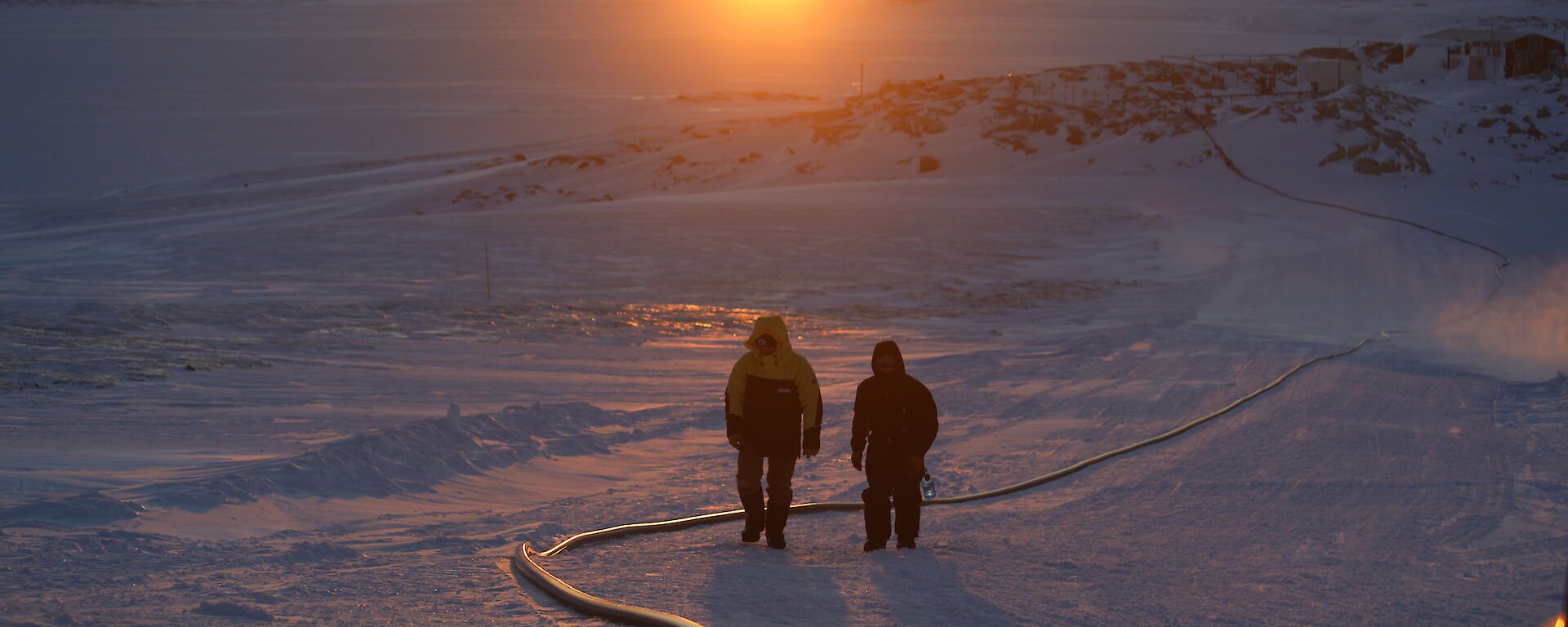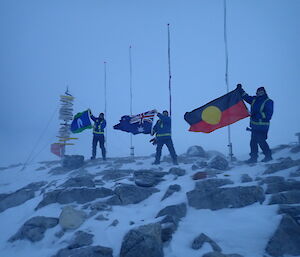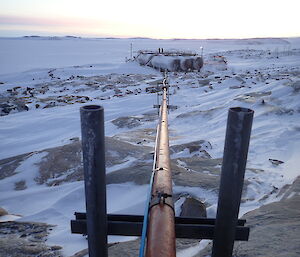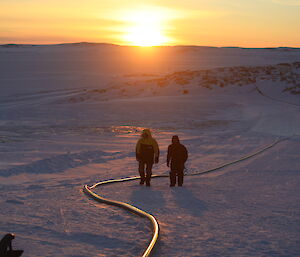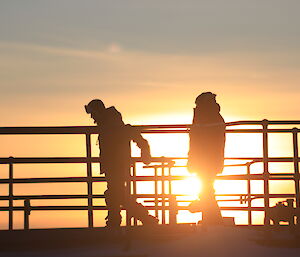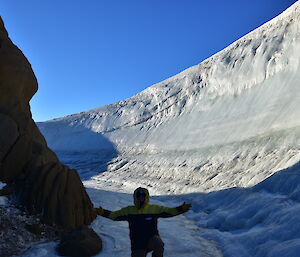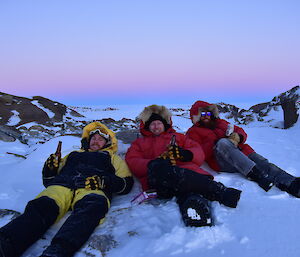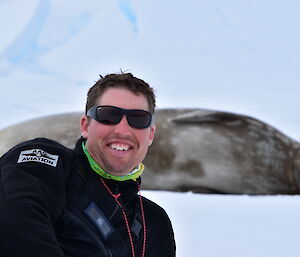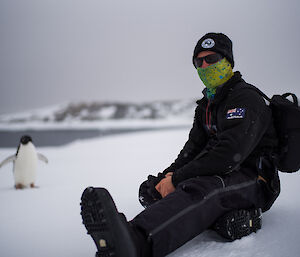Did you know we have a pig on station?
Casey station uses quite a lot of fuel, at each resupply the Aurora Australis pumps ashore close to 1 million litres of fuel to enable those of us on station to survive and work through the following year; keeping us lit up in the dark hours of winter, ensuring our multitude of machinery can continue operating, and most importantly guaranteeing we remain defrosted and warm in this very harsh environment.
But pumping that fuel ashore is not the last of the story: the main fuel storage facilities at Casey station are the two bulk storage fuel farms. The lower and upper fuel farms (not very original names) contain six and five 90 000 litre capacity tanks respectively. But what happens when the upper fuel farm (UFF) gets a bit low on fuel? Well, we do a transfer from the lower fuel farm (LFF)… and that’s not as simple or as quick as it sounds. In the pristine Antarctic environment it’s paramount that we don’t have a fuel spill. (We don’t want to be remembered in perpetuity for the wrong reason!)
So, this last week has been all about the fuel transfer. Fuel spill response training, familiarisation with the equipment, standard operating procedures reviewed and acknowledged, set up of fuel spill and transfer equipment, snow clearing, and rostering. All done before one millilitre of fuel is run through a transfer line.
And then on Tuesday, weather gods smiling on us (clear and calm but still −26C), the team of hardy expeditioners met in the dark hours of the morning and moved to their positions to start the pumping. Pressure testing of the line complete, fuel valves turned to on, pump started, the fuel slowly made its way through the near 1000m of pipe and line from the LFF to the UFF. A big sigh of relief was heard across Thala Valley as the first trickle of fuel was received in the UFF and then the team settled in for a long cold day of dipping the tanks and walking the lines ensuring not a drop of fuel escaped.
Approximately 17 hours later, over 350 000 litres had been transferred and it was time for the pig… our pig is inserted into the line (via a pig trap) and then pushed along the line with compressed air forcing ahead of it any excess fuel so the line is completely emptied before being disconnected and packed away. An ingenious little device.
Why called a pig… the term ‘pigging’ originated in the gas and oil industry, where metal discs connected by a rod were moved through the oil pipelines to remove build-up of paraffin wax on the internal wall of the pipe. The action of metal on metal made a squealing noise like a pig and the name stuck.
So, here’s to being warm for the next few months.
That’ll do pig, that’ll do… and thanks team.
By Rebecca (Casey SL).

